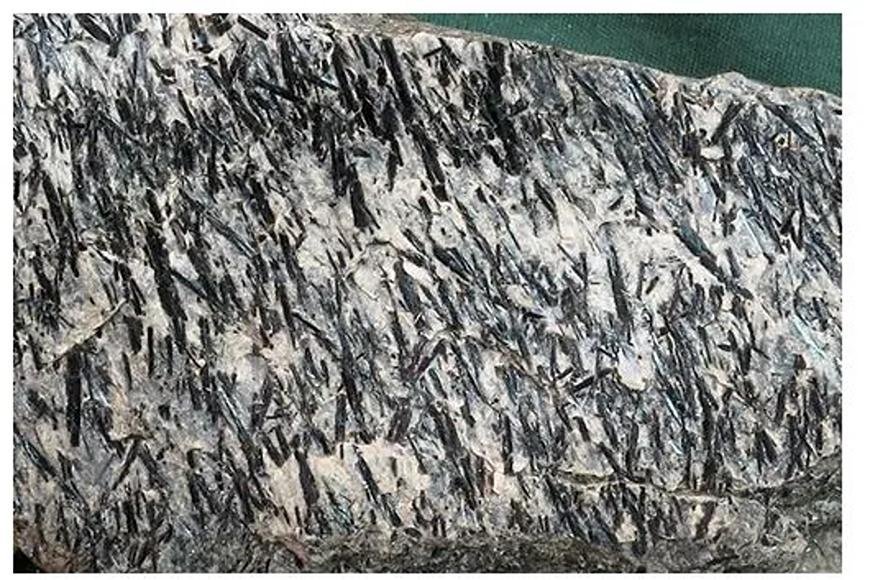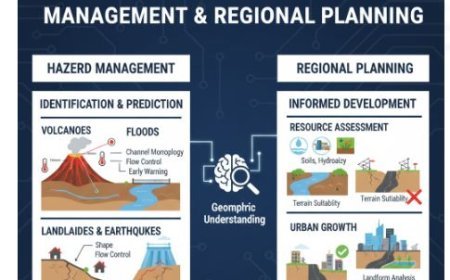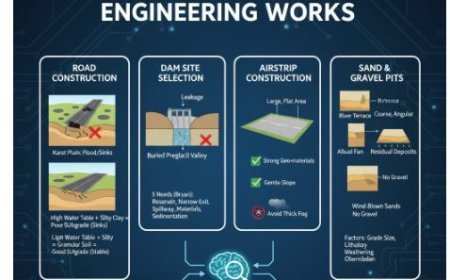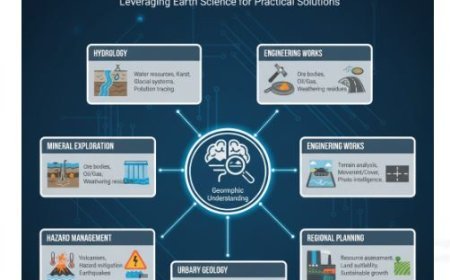LINEATION
Hidden Order in Rocks: Lineation reveals streaks or stripes, a clue to a rock's history.

LINEATION
- Lineations are the interior rocks of linear structural points in structural geology
- There are several types of lineations, the most frequent of which are intersection lineations, crenulation lineations, mineral lineations, and stretching lineations.
- Map strains with a plunge attitude and azimuth are used for recording lineation discipline measurements.
Intersection Lineations
- Any two surfaces in three dimensions can intersect to form intersection lines, which are linear structures.
- The trace of bedding on an intersecting foliation airplane appears as color stripes, often parallel to the hinges of adjoining folds.
- Intersection lineations can also be caused by the meeting of two foliations.
- Lineations at intersections are measured with respect to the two structures that intersect to form them.
- According to structural geology dimension norms, unique bedding S-0 intersected by a fold's axial aircraft foliation forms an intersecting lineation L0-1, with an azimuth and plunge defined by the resource of the fold.
- This is the usual cleavage-bedding junction thought, and it is indicative of the fold's descent on all aspects.
Stretching Lineations
- Shearing rocks at a site of unequal deformation of a rock mass is a common method for stretching lineations.
- Stretching lineation's file, particularly the vector of high-quality stretch perpendicular to the precept airplane of shortening.
- A stretching lineation might alternatively be seen as a ball of treacle (molasses) that, when dragged, forms a cigar-shaped rod parallel to the route it is drawn along. This is similar to the path a shearing force in a shear zone would take to stretch the rock.
- Shortening occurs concurrently with elongation in a perpendicular sense to the stretched rod.
- Stretching lineations may also appear as linear factors on pre-existing surfaces, such as foliated inner shear zones (see image at right, below).
- In this scenario, the lineation may furthermore be less visible in plan and may additionally necessitate dimension as a rake on a flat surface.
- In this scenario, the two lineations are created in the same deformation pattern but occur in different ways due to one of the many theologies of the deformed rocks.
- Finally, the primary distinction between a stretching lineation and an intersecting lineation is that stretching lines provide no information on the orientation of a single planar fabric inside a rock mass.
- The lines seen in the sandstone no longer show foliation from a previous deformation event, and they can't be used to figure out the orientation of folds or real bedding.
- Linear structures are useful in structural mapping because they may be used to differentiate between deformation phases and determine deformation kinematics.
- Quartz rods are one of the most visually appealing linear forms seen in fractured rocks.
- Despite being very uncommon, rods have been described in a number of areas across the world. Rods are quickly observed wherever they appear.
- Rods form a noticeable coarse lineation, usually contrasting with the surrounding rock in locations that were formerly under extreme strain.
- In geology, a time-distance rod or rodding is a mass of rock that has taken on a cylindrical structure while accommodating strain; nonetheless, particular definitions are found in the literature.
- Location measurements can constrain the mechanics of rod development.
- They are usually parallel to the fold axes and at right angles to the direction of greatest compression.
What's Your Reaction?



































